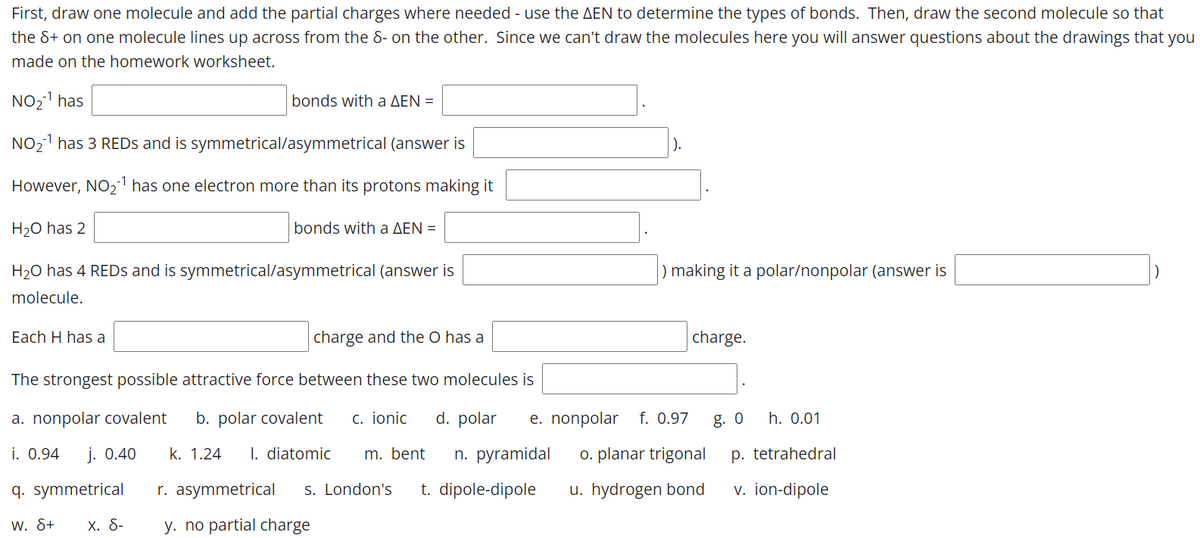First, draw one molecule and add the partial charges where needed - use the AEN to determine the types of bonds. Then, draw the second molecule so that the &+ on one molecule lines up across from the 8- on the other. Since we can't draw the molecules here you will answer questions about the drawings that you made on the homework worksheet. NO21 has bonds with a AEN = NO21 has 3 REDS and is symmetrical/asymmetrical (answer is However, NO21 has one electron more than its protons making it H20 has 2 bonds with a AEN = H20 has 4 REDS and is symmetrical/asymmetrical (answer is ) making it a polar/nonpolar (answer is molecule. Each H has a charge and the O has a charge. The strongest possible attractive force between these two molecules is a. nonpolar covalent b. polar covalent c. ionic d. polar e. nonpolar f. 0.97 g. 0 h. 0.01 i. 0.94 j. 0.40 k. 1.24 I. diatomic m. bent n. pyramidal o. planar trigonal p. tetrahedral q. symmetrical r. asymmetrical s. London's t. dipole-dipole u. hydrogen bond v. ion-dipole w. &+ х. 8- y. no partial charge
Formal Charges
Formal charges have an important role in organic chemistry since this concept helps us to know whether an atom in a molecule is neutral/bears a positive or negative charge. Even if some molecules are neutral, the atoms within that molecule need not be neutral atoms.
Polarity Of Water
In simple chemical terms, polarity refers to the separation of charges in a chemical species leading into formation of two polar ends which are positively charged end and negatively charged end. Polarity in any molecule occurs due to the differences in the electronegativities of the bonded atoms. Water, as we all know has two hydrogen atoms bonded to an oxygen atom. As oxygen is more electronegative than hydrogen thus, there exists polarity in the bonds which is why water is known as a polar solvent.
Valence Bond Theory Vbt
Valence bond theory (VBT) in simple terms explains how individual atomic orbitals with an unpaired electron each, come close to each other and overlap to form a molecular orbital giving a covalent bond. It gives a quantum mechanical approach to the formation of covalent bonds with the help of wavefunctions using attractive and repulsive energies when two atoms are brought from infinity to their internuclear distance.
Draw the attraction between a water molecule and a nitrite ion, NO2-1

Trending now
This is a popular solution!
Step by step
Solved in 2 steps with 2 images









